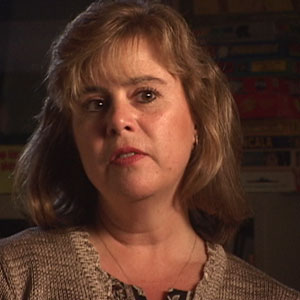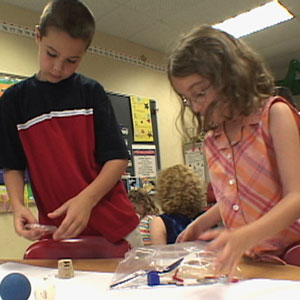Join us for conversations that inspire, recognize, and encourage innovation and best practices in the education profession.
Available on Apple Podcasts, Spotify, Google Podcasts, and more.
 “My father was an elementary school biology teacher and a principal and my mother was a nursery school teacher, so I guess it was in the blood. And I’ve always loved children, so it’s a fun profession.”
“My father was an elementary school biology teacher and a principal and my mother was a nursery school teacher, so I guess it was in the blood. And I’ve always loved children, so it’s a fun profession.”
Cindy Plunkett teaches first grade at the Blanchard Memorial School in Boxboro, Massachusetts. It is located in rural Middlesex County, about 30 miles west of Boston. Blanchard is a Title 1 school that identifies itself as a ”STARR Program School,” whose values are Support, Teamwork, Attitude, Responsibility and Respect.
Cindy remembers her early interest in science began as a result of growing up near a pond. “I’m naturally drawn to the outdoors and I enjoy hiking with my kids. We were identifying plants this week and observing their changes through the seasons. I guess that’s what keeps me interested in science.”
Cindy uses the National Science Resources Center “Science and Technology for Children” curriculum extensively. She particularly values the teacher’s guides, which she says, “pretty clearly spell out the concepts that I want to teach.” In addition, she says, “I study before I teach my lessons and use a number of different resources to gain my background knowledge — reference materials and the Internet — to find out more information.” Cindy also networks outside in the community, where she has taught for 20 years, inviting scientists and naturalists to come and speak to her students.
She says that she can’t over-emphasize the importance of taking into consideration children’s prior ideas: “I think that children come with a lot of background information. Helping them to sort it all out and listening as they construct and develop their knowledge about the world about around them is rewarding, and an important part of teaching science.
 Lesson at a Glance:
Lesson at a Glance:
Curriculum: NSRC Science and Technology for Children, Solids and Liquids, Carolina Biological Supply Company
Grade: First
Topic: Observing Properties
Prior to teaching Lesson 2, Observing Properties, Cindy had introduced Observing and Describing Two Solids, a lesson that allows the children to concentrate on just two objects while developing their vocabulary for description. Afterwards, they will move on to subsequent lessons in which they will test the rolling and stacking ability, as well as hardness, of solids before exploring how they behave when they interact with liquids.
In Lesson 2, Cindy introduced the students to a variety of solid objects and asked them to use their senses to sort them, while thinking about their like and unlike properties. She then guided them in a discussion in which they explained the criteria they used for their sorting schemes.
As the lesson progressed, their teacher was impressed by how sophisticated their schemes became: “When children were organizing and classifying the objects to begin with, they were using a lot of colors, a lot of shapes, and they’re very visual. But then they really began to think more, and to discuss and listen to each other about what they were finding, and ultimately changed their groupings according to function and what the materials were they were made out of.”